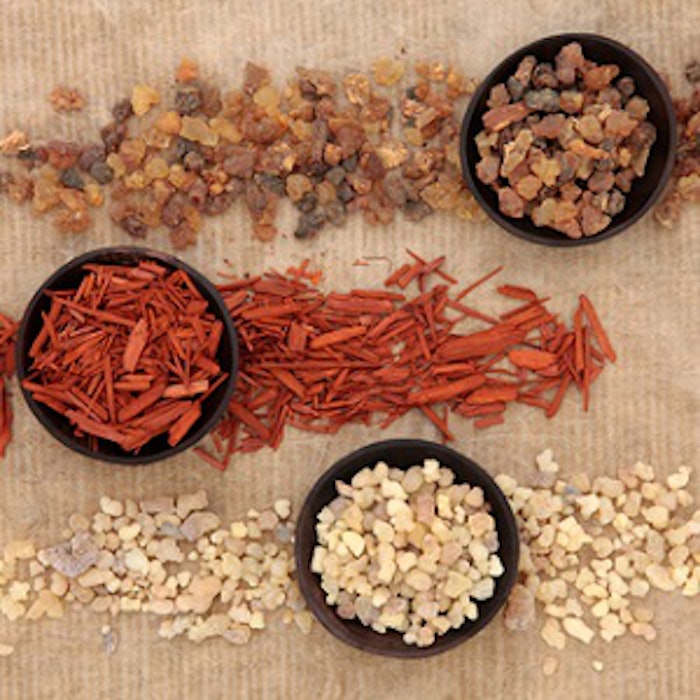
Incense is an aromatic substance that is obtained from certain resinous trees and often used for purposes of religious worship. The word is also used to signify the smoke or perfume arising from incense when burned. Ingredients can be added to incense to increase the production of smoke.
Incense is traditionally harvested from Boswellia sacra of Arabia Felix and Boswellia papyrifera. It is also mentioned in the Bible: “To what purpose comes there to me incense from Sheba, and the sweet cane from a far country? Your burnt offerings are not acceptable, nor your sacrifices sweet to me.” Another passage reads as follows: “Spikenard and saffron; calamus and cinnamon, with all trees of frankincense; myrrh and aloes, with all the chief spices.” In the biblical era, incense was extracted from the bark in a manner similar to gum production. According to some sources a basic incense formula can contain four to 13 ingredients.
One important group of fragrance ingredients found in incense of different origins are sesquiterpene-related molecules. Sesquiterpenes are a class of terpenes that consist of three isoprene units and have the molecular formula C15H24. Found naturally in plants and insects, sesquiterpenes may be acyclic or contain rings, including many unique combinations. Biochemical modifications such as oxidation or rearrangement produce the related sesquiterpenoids. The chemical structures and properties of these materials, including frankincense, myrrh, sandalwood, agarwood and Bursera graveolens, are detailed in this article.










